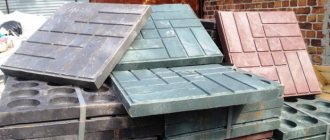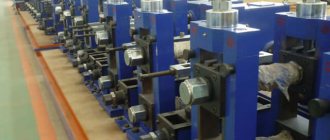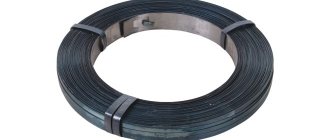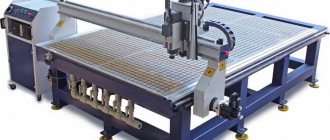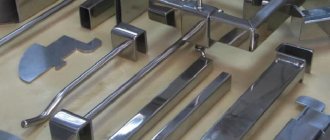Business processes: categories and features
Technological process of main production
Procedure for calculating product costs
Evaluation of the enterprise's performance
A business process is a set of actions (operations, activities) that are performed in a certain sequence and aimed at obtaining the final result.
Basic categories of business processes:
- operational business processes (production, sales, etc.). This is the basis of the business, all other business processes are auxiliary;
- business management processes (planning, strategy development, corporate governance, etc.);
- serving business processes . is designed to ensure the functionality of the entire enterprise as a whole, which ensures the functioning of the main business process (recruitment, work of the financial service, purchasing department, accounting, engineering and technical staff, etc.).
The business process “Main production” (belongs to the main category) is a set of actions (operations, activities) performed in a certain sequence and aimed at producing the final product (service, product) to meet the needs of customers. Primary production is the foundation of the enterprise’s functioning, the basis of its cash flows.
To carry out the main production as a business process, a set of various resources is used: human, material, technical, financial, etc. The result of the “Main Production” business process is profit from the sale of products (goods, services).
First of all, when studying the main production, you need to understand the process of manufacturing products, that is, study all stages from the acquisition of raw materials to the sale of goods to the buyer (often the first step is not considered to be the acquisition of raw materials, but the receipt of an application from the customer to purchase products or perform work (services)).
We will do this using the example of the manufacturing enterprise Alpha LLC, which produces wooden chairs.
Let's imagine the main production process in the form of a diagram:
Definition and characteristics
The concept of a technical process is revealed in production. Interrelated activities starting with material logistics, moving to processing and ending with finishing, packaging or installation of the finished product. A detailed description of the technological process includes blocks - technological operations. Each operation is characterized by the characteristics of a general process, and its implementation is carried out by one specialist using specific equipment. Everything is united into a general scheme by technological transitions - completed operations.
Technological process diagram of a metallurgical plant
For an enterprise, the technical process becomes the basis: on the basis of it, the characteristics of each working piece of equipment are formed, and the features of the interaction cycles of work shops are developed.
If we look point by point at what a technical process is, we can distinguish the following stages:
- economic feasibility and assessment of production efficiency;
- production calculations of the required volumes of materials and machines;
- acquisition and delivery of materials;
- process of processing raw materials on equipment;
- packaging or installation, sale of the finished product.
A well-functioning technical process diagram simplifies the work of any production.
Purchase of raw materials and supplies
Material costs include the costs of raw materials and basic materials, components, transportation, procurement and other costs associated with the production and manufacture of products.
This category does not include expenses for materials for the household needs of workshops and office premises (soap, mops, brooms, napkins, paper towels, office supplies, materials for office equipment, etc.).
Thus, material costs are raw materials and materials needed exclusively for basic production.
Before concluding supply contracts for raw materials and supplies for the production of products, it is necessary to analyze in detail all potential suppliers in order to select the most favorable delivery conditions, the most reasonable prices and the shortest distance from the enterprise warehouse to reduce transportation costs.
Depending on the number of chairs produced, the level of material costs will vary.
What materials and in what quantities are needed to make one chair are in the table. 1.
Table 1
Explanation of expenses under the item “Raw materials” per unit of production
| Name | Unit change | Qty | Price, rub.kop. per unit change excluding VAT | Costs, rub. cop. excluding VAT |
| Beam 40×60 mm | PC. | 2 | 100 | 200 |
| Edged board 400×480 mm | PC. | 1 | 200 | 200 |
| Edged board 100×420 mm | PC. | 1 | 200 | 200 |
| Furniture foam rubber | sheet | 5 | 350 | 1750 |
| Textile | m2 | 3 | 590 | 1770 |
| Self-tapping screws | PC. | 15 | 10 | 150 |
| Glue | PC. | 2 | 87 | 174 |
| Varnish | l | 0,14 | 500 | 70 |
| Dye | kg | 0,24 | 1700,00 | 408 |
| Sandpaper | m2 | 0,7 | 114 | 79,8 |
| Total material costs per chair | X | X | X | 5001,8 |
Since the main goal of an enterprise is to make a profit, and this is directly related to reducing the cost level, it is necessary to consider various options for cost optimization. At the same time, do not underestimate the cost of raw materials and materials - one of the fundamental elements of costs in industrial enterprises.
To reduce costs under this item, you should review contracts with suppliers and counterparties or find new suppliers - with more favorable terms of delivery, payment and, of course, prices. To do this, as a rule, most often:
- conclude contracts with manufacturers directly, bypassing intermediaries or reducing their number to a minimum in order to reduce the purchase cost of raw materials;
- enter into contracts with suppliers for the purchase of large quantities of materials. In this case, you can negotiate with suppliers to provide discounts, but do not forget about the increased costs of storing large quantities;
- independently produce raw materials and supplies. Self-production is not always cheaper than purchasing finished material from suppliers.
- they purchase cheaper raw materials (the most common method now).
We recommend
Before purchasing cheaper raw materials, analyze whether the quality of the products will decrease, and as a result, whether the demand for products will remain if their quality decreases.
Main and auxiliary technical processes
The development of any technical process involves its classification. The following types are distinguished:
- basic;
- auxiliary;
- serving.
The main technical processes are further divided into procurement, processing, assembly, finishing, and information support stages. This is the direct development, creation of a product or service that meets the goals of the organization. Production itself is only a component of the overall mechanism of the technological process.
Auxiliary processes are aimed at maintaining the operating conditions of the main ones. This includes monitoring the condition of equipment, workshops, and the supply of tools and personal protective equipment for specialists. Each operation of the auxiliary stage is important and must be performed.
Service processes include logistics procedures for raw materials and finished products. They involve warehouse and transport hubs. Auxiliary and maintenance processes can be outsourced - this approach is often more cost-effective.
TECHNOLOGICAL PROCESS AND ITS COMPONENT PARTS [p.134]
The result of any technological process and its component part of the technological operation, as noted, is characterized by a parameter. In most cases, a technological process consisting of several technological operations is determined by several quantities that form a multidimensional vector. [p.38]
The results of applied research work are used in the implementation of design preparation for production, the purpose of which is to design and create a prototype of a future product, test it and develop fundamental technical solutions. In the process of implementing design preparation for production, work of a research, design, technical and economic nature is carried out. In this phase, areas of application of new products are established, requirements for its technical and economic parameters are formed, and the expected economic efficiency is determined. Designers and constructors develop schematic diagrams of products, design the product and its components, and work out technological aspects. Prototype [p.8]
In general, the production cycle consists of the duration of the main and auxiliary technological processes and breaks. The structure of the cycle is determined by the composition and specific gravity of its components. [p.18]
According to the types and nature of the work performed, production preparation processes are divided into research, design, technological, organizational, economic and production. The basis for distinguishing these processes is the type of labor activity, the implementation of which is necessary to achieve the final result of a particular process - the design of a product or its components, technological design, the manufacture of a sample of new equipment, economic evaluation of technical solutions, etc. [p. 14]
By the beginning of the 70s, it became clear that the autonomous use of modeling methods in planning practice does not give the desired results, that the introduction of economic-mathematical models should not be an end in itself, but an important means of improving the entire planning methodology and methodology and an organic component of a single process development of its scientific and technical base. In this regard, it will not be an exaggeration to say that the deployment of work on the creation of ASPR marked a qualitatively new stage in the development of the theory and practice of economic and mathematical modeling, since the design of ASPR from the very beginning was focused on the system construction and consistent implementation of interrelated methods and means into planned work methodological, informational, technical, technological, mathematical support for planning. Under these conditions, comprehensive improvement of planning processes, on the one hand, is achieved through the widespread use of economic and mathematical models, on the other hand, it creates the necessary information and technical [p.117]
Let us first consider a certain technological process based on physical-chemical or mechanical processing of raw materials, say, the operation of grinding cement. In this process, production resources are used - mineral raw materials and electricity, and both energy costs and product output per unit of time are determined by the technical indicators of the equipment, and the costs of raw materials are determined by the composition of the cement. Based on these indicators, it is possible to describe the technological process being studied and formulate its cost function. A natural question arises whether such a cost function can be used in practical research. The answer to this question depends on how well the production process is organized. In reality, the quality of raw materials is variable and does not always meet the requirements that were used as the basis for calculating technical indicators. This leads to changes in productivity and energy costs (as the physical characteristics of the raw materials change), and in the case of fluctuations in the chemical composition of the raw materials, to a change in the proportions of the components. The quality of service, including the regularity of preventive repairs and the ability to replace worn parts (as is known, spare parts are not always available in sufficient quantities) has a great influence on the performance of equipment. All this leads to the fact that in reality both equipment performance and resource costs can differ greatly from the theoretical values calculated for the ideal case. [p.106]
With the development of machine production, the machine and its components underwent significant changes. Nowadays, science and technology have come far ahead. New powerful machines are being introduced into production, electricity is being widely used, and comprehensive mechanization and automation is being carried out. Now, to the three parts of the machine (engine, transmission mechanism, working machine), a fourth part is added - a control and regulatory mechanism. Special devices, instead of humans, monitor and regulate technological operations. However, neither comprehensive mechanization nor automation of production means the complete elimination of the worker. On the contrary, its functions become more complicated and require even more effort in work. He controls the production process, monitors the operation of machines and devices, sets them up, eliminates breakdowns, etc. [p.99]
The most important task that must be solved when testing a design for manufacturability, according to the methodology, is to reduce the labor intensity of manufacturing a product, which, firstly, depends on the degree of unification and standardization of its components and their elements (this in turn is associated with their mass or large-scale production specialized production, increasing the level of interchangeability, unification of structural materials, used fits, accuracy classes, roughness, etc.) secondly, on the degree of typification of technological processes at all stages of product manufacturing, starting from the receipt of blanks and ending with the processes of assembly, control and testing of the finished product products, as well as maintenance and repair processes; thirdly, on the degree of manufacturability of the layout of the product itself, its rational division into component parts. [p.80]
The second point in the current decade is that the process of mass practical development of technologies is becoming decisive. Its basis in the 80s will be the components of the device - components such as microprocessors, storage devices, sensors and new materials. For technological development, a sudden systemic change is not typical; as a rule, we are talking about the use of already known private technological solutions, the development of new concepts and functionally new products, along with the improvement of existing ones. The most important aspect of advanced ultra-large-scale integrated circuit technology will be its application. [p.115]
The volume of work in progress and semi-finished products, the cost of which is included in working capital, depends on the duration of the production cycle. At the same time, the duration of the cycle affects the turnover of working capital; the shorter the cycle, the less working capital is required. With an increase in working capital turnover, the volume of products sold and the total amount of profit increase. Accordingly, profitability increases in relation to the amount of fixed and normalized working capital, which is of great interest to the enterprise as a whole and its employees. For a number of chemical industries, the production cycle takes a long time. For example, in aniline dye production, the cycle time of the production process alone for a number of products reaches 30-40 days. In Fig. 2.1, schedules for all types of movement determine the working period, i.e. the time spent directly on the technological process (change in the composition or configuration of the subject of labor). The working period is the most important component of production time, which is determined by the amount [p.23]
XVI. The mental component in the structure of activity, during the implementation of which the cause of the accident was formed and manifested 1—synthesis—perception and study of an object (machine and technological process system) in the integrity, unity and mutual connection of its parts 2—analysis—perception and study of an object with division into components in kind and in abstract representation 3 - coordination - correlation of functions and objects of activity of machines, systems 4 - comparison - comparison with selection, selection [p.220]
Intra-production transport is an integral part of the technological process of a given organization (enterprise). He participates directly in the production process and the creation of new material products of labor. The costs of intra-production transport are part of the production costs of the enterprise, therefore, part of the cost of its products. Intra-industrial transport is not an independent branch of transport production, but is an integral part of the industry in which it operates. [p.419]
According to this theory, the main element of any economic structure is considered to be a technological complex, which consists of specialized technological processes. TS products are produced primarily to satisfy internal needs. This determines its most important property - integrity, which is preserved in the process of technological shifts. The criterion for classifying a specific production process as a particular aggregate is the degree of specialization: if the manufactured products are used within the TS, then the latter is considered its component, and if there are several heterogeneous consumers, the production in question represents an “output” associated with the “outputs” of other aggregates. Each vehicle consumes universal resources (“outputs” of adjacent aggregates) and ensures their processing before entering the sphere of final consumption. [p.49]
All functions performed in the Company must be presented in the form of a governing document and tied to a specific technological process. The technological process is understood as the sequential implementation of information processing operations in order to obtain results in accordance with the target task. An integral part of a process, a sequence of operations, the result of which is either output information for creating a RD, or a condition for the execution of this process, is defined as a subprocess. Guiding documents are developed from the perspective of describing the actions of departments or performers in order to form the final result of the activities of both the Company and its structural divisions. [p.8]
MEANS OF LABOR are the main component of the means of production, thanks to which the initial product of nature is transformed into a finished product that satisfies a specific human need. Instruments of labor are a thing or a set of things placed by a worker between him and the object of labor, with the help of which he influences this object. People use the mechanical, physical, and chemical properties of things in order to use them to influence other things in accordance with their purpose. When using means of labor, a person activates an ever-increasing number of technological processes aimed at satisfying his life activity. [p.283]
Thus, the system of accounting accounts ensures that all costs are accounted for by economic elements and their distribution between business processes. However, in order to control the composition of costs at the places where they were incurred and to calculate the cost, it is necessary to know not only what was spent in the production process, but also for what purposes (where, for what) these costs were incurred, i.e., take into account costs by area, in relation to the technological process. This cost accounting allows you to analyze the cost by its components and by certain types of products. For these purposes, production costs are divided into basic and production maintenance and management. As part of the latter, costs for the maintenance and operation of machinery and equipment are taken into account separately, costs for managing workshops (general production costs) and managing the enterprise as a whole (general business expenses). [p.256]
The annual plan is an integral part of the long-term thematic plan and represents its further development and clarification. The thematic plan is drawn up taking into account the established technological processes of electrothermal, smelting, electrolysis, galvanic, etc., as well as taking into account the mode and type of power plants of electric welding equipment, compressor, pumping, converting plants, etc. [p.372]
Regulatory accounting can be effective, generating the information necessary for cost management, and finally, justify the efforts and costs of its implementation and maintenance only when it acts as an integral part of the organization of the production process. I. A. Basmanov rightly points out that the implementation of this characteristic feature of regulatory accounting does not occur automatically, but under certain conditions. Among them are qualitative standards that reflect the needs of production with a given technique, technology and its organization; strict adherence to the technological process; timely and accurate reflection of deviations from the norms [8, p. 52]. [p.212]
The disadvantages of the fiber include the difficulty of dyeing it, increased fragility and relatively low abrasion resistance of the fibers, as well as the need to use an expensive solvent, such as dimethylformamide, to prepare spinning solutions. Therefore, an important part of the technological process is the regeneration of solvents and components of the precipitation bath. Pilot production of polyacrylonitrile fiber appeared in 1948, and industrial production was first created in the USA in 1950. Production of this type of fiber reached large scales in the USA, Japan, France, England and Germany, where its production in 1958 exceeded 50 thousand tons. The main part of production falls on the USA. [p.488]
Intra-production transport directly serves the process of production of material goods or the sphere of production. His work is related to the technological processes of production or extraction of products within individual enterprises, so he is an integral part of the means of production and the production process of the enterprises that he serves. [p.7]
According to the current terminology, the unification of products is a reduction to uniformity based on determining the rational number of their varieties. At the design stage, the use of standardized components in the design, and even more so the use of parts and assemblies, standardized and manufactured in specialized production, sharply reduces the labor intensity of product development due to the fact that there is no need to carry out a number of works in the process of design and technological preparation of production. The amount of savings and the range of sources for obtaining them also largely depend on the form of unification. In other words, a unified product can be very different in terms of its prevalence. Firstly, the product can be standardized. In this case, it is guaranteed that it is optimal in terms of efficiency of use in the national economy, i.e. the design has been reasonably selected or developed, it has been tested for manufacturability, all data on the product is available in catalogs, on microfilms, etc. In addition, a standardized product in many cases, it is possible not to manufacture at a given enterprise, but to buy a ready-made product created in a specialized production environment. In designs, as a rule, they use [p.131]
Operational economic analysis, which is an integral part of the design process, should be carried out by the designers and technologists themselves. At each design stage, for each product and its component, each of its details of each technological process, when conducting an operational economic analysis, labor intensity, cost, the required amount of capital investments, and reduced costs must be continuously calculated. In addition, for the entire IB product as a whole, its limit price must be continuously calculated and adjusted. The calculation of all these economic indicators is based on a number of technical and quality indicators of the designed product. When designing gear-processing equipment, such indicators can be productivity, power, accuracy of gear processing, diameter of the gear being processed, etc. [p.30]
An important component of the normative management system is the normative method of accounting for production costs. This method best meets the requirements for the efficient use of material, labor and financial resources used in the manufacture of products. It is usually considered as a system of normative planning, accounting and control of production costs. Planning, accounting, control and economic analysis together constitute a system of management accounting for production costs. This system also covers design, technological, organizational and economic preparation of production. Consequently, drawing up standard calculations of product costs creates the prerequisites for integrating the processes of technical and technological preparation of production with the processes of planning, accounting and economic analysis of product costs and financial results of the enterprise. It is also important that standard calculations for a part, assembly or other planning and accounting unit serve as the basis for the development of in-production prices. [p.404]
The energy sector of a modern industrial enterprise consists of energy and auxiliary devices and structures designed to provide the enterprise with various types of energy [1.2]. Technologically, the energy sector is divided into a number of interconnected energy systems of electricity supply, water supply, heat supply, gas supply, air supply, etc. Depending on the specifics of the enterprise, its capacity and the characteristics of the technological process, these systems in one or another combination are available at every industrial enterprise and are its most important component part. The interconnectedness of energy systems is explained by their participation in a single process of energy supply. The variety of technological and production processes at individual industrial enterprises determines the peculiarities of the structure and functioning of energy supply systems. [p.4]
However, in mechanical engineering, on average, about 60% of the cost of production falls on the share of supplied materials, parts and products. There are also many cases when a company conducts all production only to satisfy the needs of one large consumer. In these cases, complete technical specifications for the supply of products are required. They include a description of the product, a description of its purpose, its technical characteristics, design, detail drawings, assembly drawings, specifications of materials, descriptions of technological processes, technological instructions, requirements for quality indicators, description of control methods, description of acceptance tests. Technical conditions for the supply of products containing the above documents are an important part of the supply agreement. [p.78]
Components of the technological process
The main elements of the technological process using the example of metalworking are:
- Mechanical processing is an action on a workpiece to change its shape and size. The material is removed using a special cutting tool on industrial equipment.
- A technological operation is a segment of a technical process performed without interruption by one performer with reference to a specific workplace.
- Transition – surface treatment using a single tool while maintaining the mode (constant rotation speed, feed).
- Installation is a part of the operation that is performed during one fixation of the workpiece. Multiple settings can be defined per operation.
- Reception - specific actions of working personnel aimed at achieving results. These include starting up machines and equipment, installing cutting equipment, and securing workpieces.
Interesting: Silumin - what kind of alloy is it and where is it used?
The process flow diagram is an additional accompanying document that clearly explains the work plan.
Types
Technological production schemes are divided into the following types:
- with open chain;
- cyclic (circulating, circular, closed).
An open circuit circuit consists of devices through which all components pass only once. The cyclic scheme provides for the repeated return to one apparatus of all reacting masses or one of the phases in a heterogeneous process to achieve a given degree of conversion of the initial substances.
A technological diagram has the form of sequential schematic images of interconnected machines and devices or sequential symbols of interconnected operations.
Technological devices in the diagram are depicted in the form of simplified external outlines of an element, a standard symbol, rectangles and other geometric shapes.
The essence of the technological process
A process is usually called a change in an object in the presence of influence of internal or external conditions.
External influences include mechanical processing, interaction with chemical reagents, temperature and radiation effects. Internal factors - the resistance of the material of a part or product to external influences, while maintaining its shape and condition at the time of processing. The essence of the correct technological process is the correct selection of the material and the principle of influence on it.
During the production process, at the stage of preparation of documentation and development, the technologist is engaged in the selection of factors influencing the material or raw materials. The final result should correspond to:
- specifications for the final product;
- planned standards for the production and production time of products;
- economic efficiency established in the enterprise operating model.
All production factors must be optimally combined so that products can be produced technologically quickly and have an optimal return on investment in a short period of time.
Selling and making a profit
The finished products are sold - either sold in a store or delivered to the customer, as a result of which the company receives revenue from sales.
The cost of selling one chair is RUB 24,000.00. The total costs for the manufacture of this product amounted to 19,364.60 rubles. Profit from the sale of the chair—RUB 4,635.40.
To assess the intensity and efficiency of production, profitability indicators are calculated.
Return on product (ROM) is the ratio of profit to total cost. Shows how much profit is received per 1 ruble. current costs:
ROM = (Profit / Cost) × 100%.
Return on sales (NPM) is the ratio of profit to revenue. This indicator characterizes the degree of profitability of the enterprise and the correctness of setting the sales price, reflecting the share of profit in the proceeds from the sale. Return on sales shows how much profit a company has from 1 ruble. sales:
NPM = (Profit / Revenue) × 100%.
Let's calculate these indicators for Alpha LLC:
ROM = (4635.40 / 19,364.60) × 100% = 23.94%;
NPM = (4635.40 / 24,000.00) × 100% = 19.31%.
As such, there is no standard value for profitability indicators. It is generally accepted that the higher the profitability indicators of an enterprise, the more efficiently it carries out its financial and economic activities and the more correctly it chooses a pricing strategy. Some sources note that profitability indicators should not fall below 5%.
Stages of TP
Production cycles are preceded by the stages of design and technological solutions. The stages of the technological process are divided into:
- preparation and analysis of input data on the future product, material, production base;
- selection of optimal technological solutions;
- justification of the technical feasibility and economic profitability of the process for the enterprise;
- registration of the technical process in the format of technical documentation.
Building the correct sequence for process steps takes a lot of time. The final result includes planned deadlines, quality level, and cost of the final product. A large number of products are manufactured according to GOST, which requires additional analysis by technologists.
If the economic calculation does not coincide with the indicators that are established in the enterprise plan, the main stages of the technical process are repeated. A close match between the calculation figures and the plan is considered normal.
Development order
When developing a basic technological diagram (or converting a complete technological diagram into a fundamental one), it is necessary to adhere to the following recommendations:
- show one of several similar technological lines;
- show one of several similar operations or one of several parallel (or sequential) similar devices;
- remove backup equipment;
- remove or simplify heat recovery (recovery) systems;
- remove the piping of the devices with additional pipelines;
- remove control and measuring instruments;
- remove all protective devices and devices.
Thus, using the technological regulations, the technological diagram (complete or basic) and the technological part of the project, it is possible to assess the explosion and fire hazard of the apparatus, process, as well as the level of their fire protection; These documents are a source of information about technological processes, which is necessary to analyze the fire hazard of the facility as a whole.
Types of technical processes
Types of technological processes for processing materials are classified according to different parameters. In terms of repeatability in the manufacture of the final product, processes are divided into:
- Single technological process. Created for the manufacture of a unique product or part. The end result has individual design and technological characteristics.
- Typical technological process. Designed for a certain volume of products of the same type. The products are similar in design and technological parameters. A single technical process in some industries consists of a set of standard ones. A larger number of standard technical processes in production makes it possible to reduce the costs of starting the production of products. This allows you to improve the economic performance of the enterprise.
- Group technical process. In this case, the parts are structurally different, but have a similar technological plan.
Technological processes according to the characteristics of innovation and innovativeness are divided into:
- Typical. The production uses classic, proven designs, processing methods, tools, and equipment.
- Promising. The latest technologies and approaches, modern machines and tools are used in our work. This type is typical for organizations that are leaders in their industries - they actively develop the material and technical base of enterprises.
Interesting: DIY cold forging of metal
According to the degree of detail, technical processes are:
- Route. The technical process is developed in the format of a route map. It includes top-level information - a list of operations, their order, the type of machines and equipment used, equipment and time allotted for execution.
- Operational technological process. The most detailed technical process, describing the processing sequence in detail. Everything is indicated, including the level of transitions and mode parameters. It is drawn up in the operating card standard.
The operational process was developed in the USA. The shortage of personnel with the required qualifications due to the Second World War led to the development of a precise sequence of work. This made it possible to attract less qualified labor to production, without experience. In wartime, this made it possible to fulfill planned production standards on time. In peacetime, this approach brings additional costs. The work of technologists is often wasted - the experience of workers in the workshops, accumulated over the years, makes it possible to exclude detailed operational maps and increasingly use route maps.
Example of a typical technological process
The principle of consolidation of operations
This principle is characterized by the inclusion of a larger number of transitions in one operation. In practice, this improves the accuracy of the mutual orientation of the axes and machined surfaces of the workpiece or part. Efficiency is achieved through the execution of all operation transitions in a single installation on a machine or a multi-axis CNC-type processing center.
The principle significantly reduces logistics operations within the workshop. The time spent on installation and debugging of production units is reduced.
Examples include particularly large and technically complex parts, the movement and installation of which is particularly difficult and time-consuming.
The approach is applicable on turret-type machines, lathes with a large number of cutters, and machines with numerical control.
The principle of division of operations
The operation is divided into a sequence of simple transitions. The equipment undergoes adjustment of the operating mode once for the first part in the series. The remaining parts from the batch are processed in the initially configured mode.
The principle shows effectiveness on large series of products with a relatively simple configuration.
The advantages include a reduction in labor intensity through optimization of workplace organization. Personnel improve their skills in repetitive movements for installing and removing workpieces, debugging equipment and replacing equipment.
The growing number of installations reduces the time for setting up modes - this is precisely what has a positive effect of the principle.
At the design stage, to increase efficiency, the technologist carefully considers the use of specialized equipment and devices for quickly working with the workpiece.
Wood and metal processing
The technological process for manufacturing parts from wood and metal is significantly different. Working with wood includes the following stages and features:
- Checking humidity. If the parameters deviate from normal, the material is sent to the drying chamber and brought to operating parameters.
- Methods and equipment for sawing are determined based on the type of wood.
- The cutting method depends on the diameter of the log.
- If there are knots in the lumber, additional equipment will be required to drill them out and glue in a regular wooden plug.
- The line of equipment should include grinding and planing machines.
- Storage of finished products is possible in warehouses with normal humidity to prevent damage to the finished product.
Interesting: Types of metal carvings and their classification
Modern and traditional methods of metal processing include the following areas:
- Electrical processing. An example is perforating metal sheets.
- Mechanical processing is a large group of methods. Turning, milling work and similar interactions of a mechanical cutter with metal.
- Chemical treatment. The process of interaction with reagents - acids, alkalis, and other components.
- Pressure treatment. The equipment operates by high-pressure stamping with heating of the workpiece.
- Heat treatment. Hardening (hardening), tempering (softening) - temperature treatment that changes the characteristics of metal parts.
The direction is selected by the technologist based on the characteristics of production.




